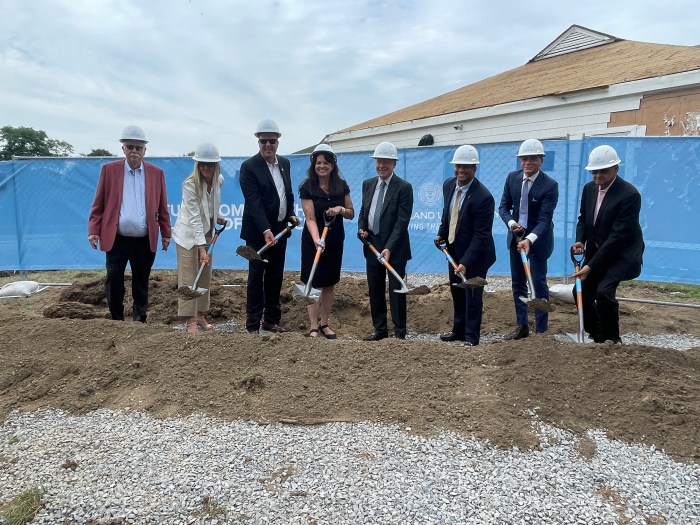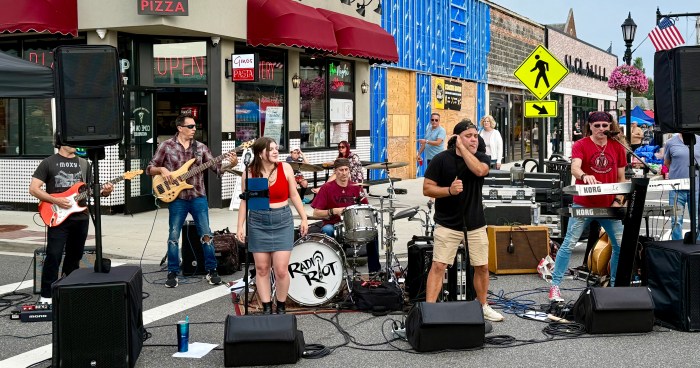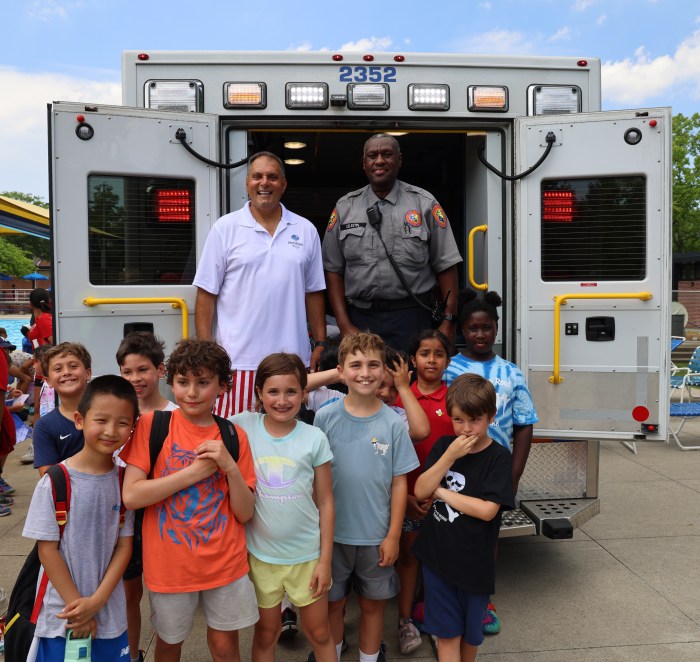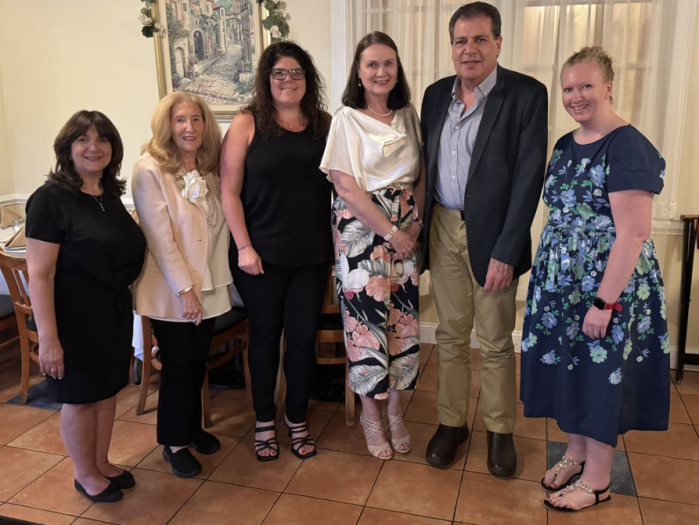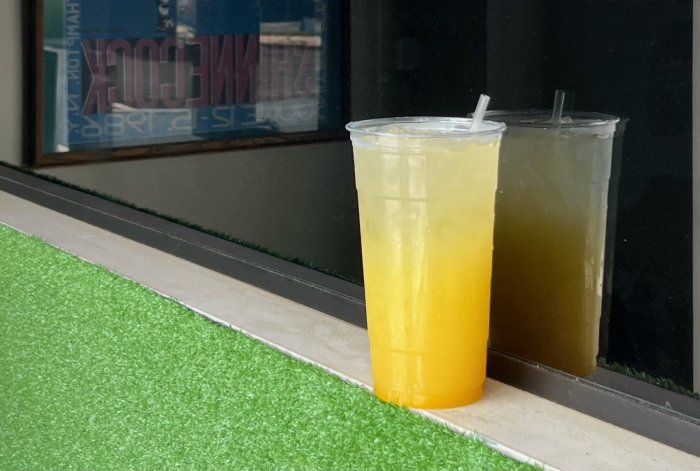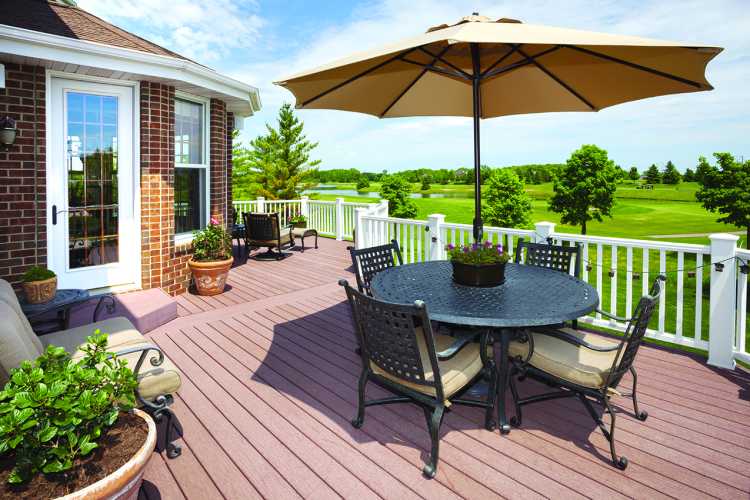Tundra, the arctic snowy owl, fixed her golden eyes upon me, clucked her beak, then turned her head, ready for her close-up. Two months earlier she was near death at LaGuardia Airport, emaciated with a broken wing, but was saved by a dedicated group of people called Volunteers for Wildlife. The organization located at Bailey Arboretum in Lattingtown houses not only the rehabilitation hospital for wildlife but has aviaries where the public can see the rescued birds.
Earlier this month at the Seawanhaka Yacht Club, 160 people arrived for the organization’s fundraising gala.
Jean Thatcher, the president of Volunteers for Wildlife and also the deputy mayor of Lloyd Harbor, was thrilled with the turnout.
“Wildlife rehabilitators cannot charge for their care so we rely on membership, donations, grants, educational programs and big benefits like this to support us,” she said.
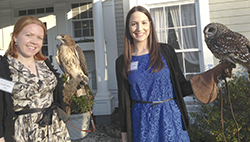 It costs $15,000 a month to maintain the organization. Volunteers for Wildlife was first started in 1982 by a World War II nurse named Sallie Ruppert out of her garage. The organization was later run out of Caumsett State Park and two years ago was relocated to the beautiful Bailey Arboretum.
It costs $15,000 a month to maintain the organization. Volunteers for Wildlife was first started in 1982 by a World War II nurse named Sallie Ruppert out of her garage. The organization was later run out of Caumsett State Park and two years ago was relocated to the beautiful Bailey Arboretum.
“Each year we admit roughly 750 to 1,000 animals and those animals are Long Island native wildlife. About 300 to 400 are birds, 300 to 400 are mammals and a small portion are reptiles,” wildlife rehabilitator Alecia Grubessi told the Enterprise-Pilot while giving a tour. “We do not take in the rabies vector species (raccoons, skunks, and bats), but we do ask that the public call us when they find those animals injured because we do know wildlife rehabilitators who are licensed to take care of them.”
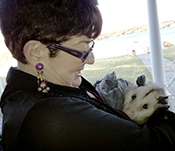
Grubessi explained the process of what happens at the center. “We have a wildlife advisory telephone which is manned by one of the staff members every day when we are here 7 a.m. to 5 p.m. and after 5 p.m. we have an e mail address that one of the staff members checks throughout the night. There is always someone on call and able to answer wildlife concerns and we speak to the public and determine what is going on with the animal if it is sick, injured or needs our care or if it is behaving normally and should be left out in the wild where it belongs. If the animal does need to come into our hospital if they can safely transport the animal to our hospital we ask them to do so, that’s because we have a very small staff and limited resources and we can’t go out and pick up every animal. Once they are at the hospital we have wildlife rehabilitators who assess their condition and determine treatment and protocol.”
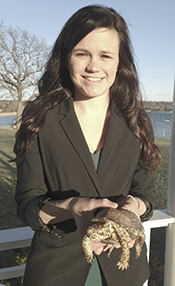
Grubessi, along with board members and wildlife rehabilitators, greeted guests at the gala displaying some of the wildlife. Rachel Neville, wildlife rehabilitator of Massapequa, recently joined the organization after graduating Cornell with an environmental science and biology degree. Holding a box turtle,she shared her thoughts on why she took this path. “I do it because I love animals and this is such a great organization. You feel like you make a difference in an animal’s life.”
Neville is also a talented artist and was taken by Tundra; she drew a beautiful sketch that went up for auction at the gala to raise funds for the organization.
“I felt she was a good representation of what we do at Volunteers for Wildlife. Her injury was a result of unfair human interaction and we used our resources to give her another chance. Unfortunately, the injury was severe enough not to allow her release. Because of that I felt she was a symbol of how humans are having a negative impact on wildlife and how we need to change our ways and have a more mutualistic relationship with wildlife.”
As guests mingled with owls, kestrels, red tailed hawks and “ Millie” the opossum, they bid on the silent auction items including tickets to Yankee Stadium, Broadway tickets, a trip to Disney and a round of gold on Fisher’s Island as a few of the items. Wines featuring pictures all of the animals recently rescued and saved were for sale. After cocktails, guests sat down for a buffet dinner. Such notables in attendance were Bernadette Castro, former parks commissioner under Governor Pataki, and State Senator Carl Marcellino, who were acknowledged and thanked by Thatcher for their help.
“It’s wonderful to save the wildlife, but if the wildlife has no home to live then we are not going to have any wildlife eventually,” said Thatcher. “Bernadette Castro has done more to preserve huge tracks of land such as Caumsett State Park.”
“This organization is phenomenal,” said Castro. “It’s wonderful and it brings awareness and visibility to wildlife and as she explained tonight, the wildlife requires open space.”
Board member and 14-year-volunteer Leslie Block, holding Millie the opossum, concurred. “It’s important people see these animals, especially children. The wildlife are losing their habitats and pesticides have been the death for many of them. The only way we can protect and maintain wildlife is to try to educate and come to appreciate wildlife.”
Jim Jones, an 18-year volunteer, shared the story of Duncan, an 11-year-old Eastern screech owl, with the audience. “He is a dropout from kindergarten. Duncan was injured, treated and released but kept coming back, so he either thinks I’m a really big ugly screech owl or he is a really attractive little human being,” he laughed. “There is nothing better than rescuing an animal that you know is not going to make it unless you are there, treating it and then releasing it. It’s fantastic, it’s magical, nothing like it.”
Volunteers for Wildlife Hospital and Rehabilitation Center is located at 194 Bayville Road in Lattingtown. They need volunteers and donations for this not-for-profit organization which does tremendous work. For an injured animal call 516-674-0982 or email wildlifeadvisory@gmail.com. Visit www.volunteersforwildlife.org.




